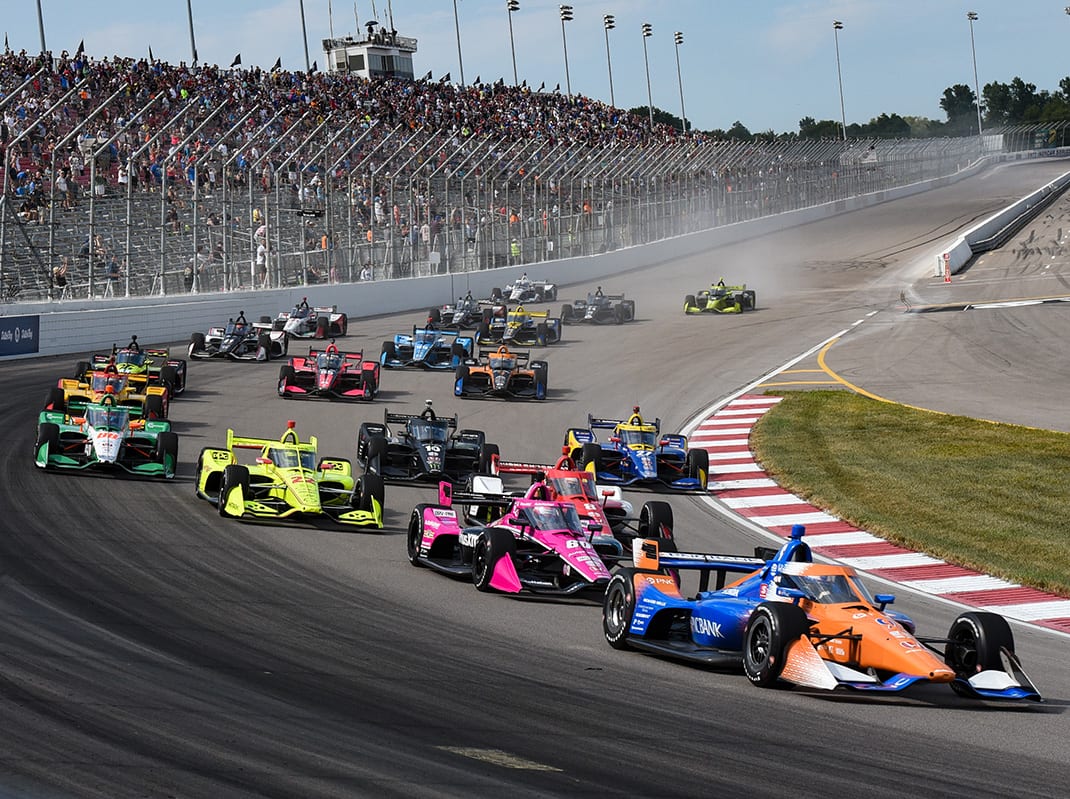From the NASCAR side, the elimination of practice and qualifications helped take some of the strain off the teams competing in doubleheaders.
When full races are held on back-to-back days, drivers and teams are able to learn from the first race and apply it to the car for the second race. Many of the races have also been shorter in distance.
Rodney Childers is the crew chief for the No. 4 Ford driven by Kevin Harvick, who won seven races after the season resumed and swept the doubleheader at Michigan.
“The shorter races seem like it’s been a good thing,” Childers said. “It keeps things exciting. Everybody is racing harder the whole time, shorter stages. Not much for people riding around or waiting until the end, any of that kind of thing. I think the doubleheaders so far have been good. I think putting two of them in the same weekend has been something that probably saves a lot of money for the teams and you’re able to put on a good show two days in a row.
“I think all of us learn a little bit every time we do it,” Childers added. “I think doing it at Pocono the first time was maybe a little bit of a shock just because none of us had ever done it before. It seemed fairly normal and not much of a problem at all. It seemed like the guys, event those with the backup cars, had time to get their stuff ready to go and be ready for the next race.

“All of us keep learning through all of it, communicating, working through it best we can. We’ll just have to see how that plays out going forward.”
From a driver’s point of view, back-to-back races give them a quick turnaround in remembering what works, and what doesn’t, at the same track in consecutive days.
“I think the format was great,” Harvick said. “I think for everybody in the garage it went well. I think, obviously, it’s the hardest on the guys on the team. I’m sure the teams will have a little bit to say about the start time of the first race, trying to give the guys a little bit more time instead of getting them here early in the morning and sending them home early in the morning. That would be better.
“I think overall everybody would be super happy with a much shorter season and multiple doubleheaders. I think it went well.”
Chris Gabehart is the crew chief for Denny Hamlin’s Joe Gibbs Racing Toyota. In addition to preparing the race car, Gabehart has to make sure he doesn’t burn out his crew members.
“I will say it’s very hard on the race teams,” Gabehart said. “There is a lot of work that goes on in between preparing a car that just raced 325 miles to race again for 350 miles, put a professional product on the race track.
“It’s very important to me and my guys to polish our Toyota Camry up with FedEx on the quarter panel and the hood. I take a lot of pride in putting a first-class race car on the race track for those guys and Joe Gibbs Racing. There is a lot that goes into that. This is very hard, but these teams are the best in the business. Whatever NASCAR wants to do we’ll support and adapt.”
What is the future of the doubleheader concept in NASCAR?
“I certainly think it’s part of the future,” Hamlin said. “I would hope so. I would think so. But you never know. There is a lot that goes into this. A lot of revenue is made for them each and every weekend. When you compile it into one weekend, their revenue is probably going to be a little bit less.
“It’s just tough to say on who has their hand out the biggest and needs the biggest piece of the pie to figure out where all the money goes.
“I certainly think from an economic standpoint for the teams, it probably is a better option than coming to a track, then coming back to the same track four or five weeks later.”
